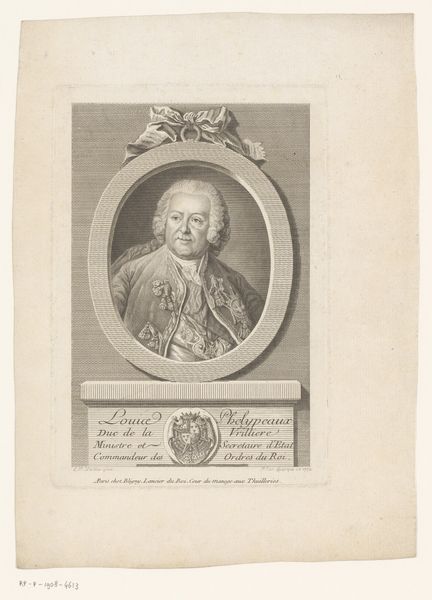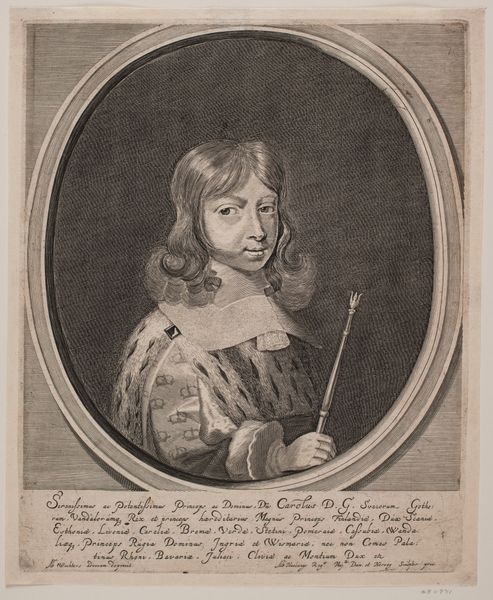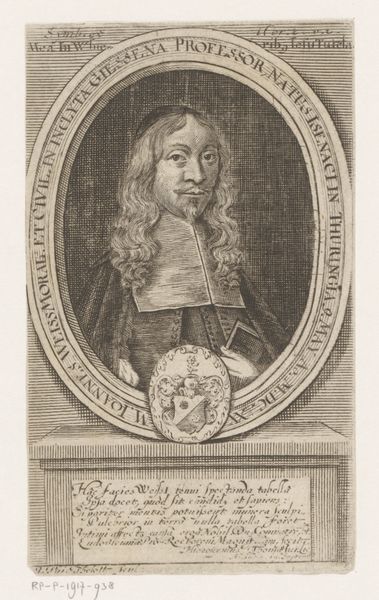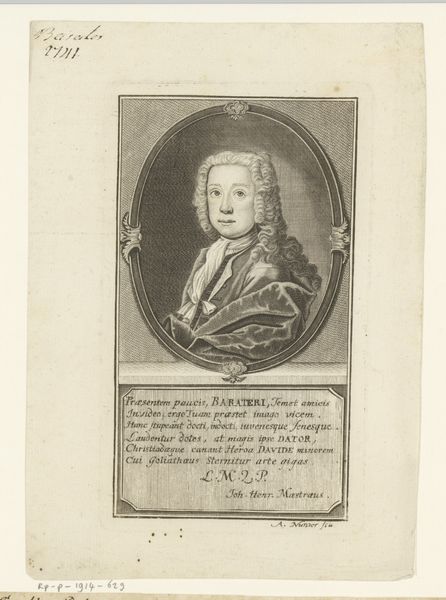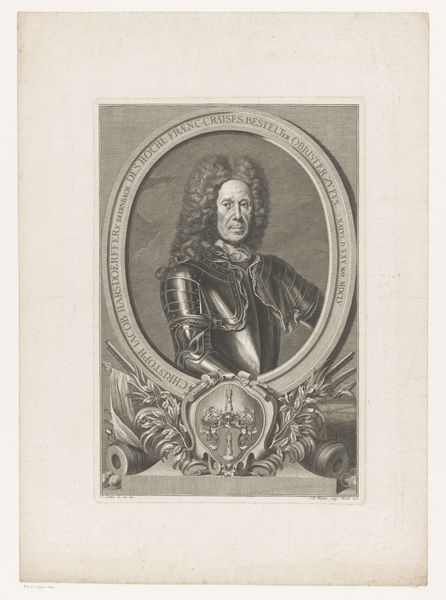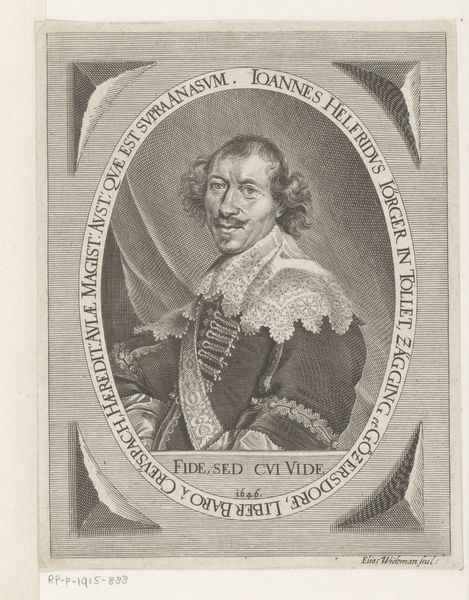
engraving
#
portrait
#
baroque
#
old engraving style
#
caricature
#
line
#
portrait drawing
#
history-painting
#
engraving
Dimensions: height 221 mm, width 159 mm
Copyright: Rijks Museum: Open Domain
This engraving of Luis Méndez de Haro was created in Paris by Nicolas de Larmessin in the 17th century. Framed by ribbons, the oval portrait showcases Haro adorned with a distinctive chain. This chain is not merely decorative; it's a profound symbol of status and power. Such chains of office and honor echo throughout history, reappearing in portraits of royalty and high-ranking officials across different cultures. Consider, for instance, the ancient Egyptian pharaohs, often depicted with elaborate necklaces signifying their divine authority, or the Renaissance-era monarchs with their heavy, ornate chains symbolizing their sovereign power. This visual language, though varied in style, taps into a universal, almost subconscious recognition of authority and inherited status. The chain, beyond its immediate representation of power, evokes a sense of continuity and lineage. The weight of the metal, the deliberate crafting of each link – all speak to the burdens and responsibilities tied to leadership, passed down through generations. It’s a physical manifestation of the psychological weight of tradition. It’s this cyclical passing down that reveals how symbols evolve, are reinterpreted, and yet retain a powerful emotional resonance.
Comments
No comments
Be the first to comment and join the conversation on the ultimate creative platform.


